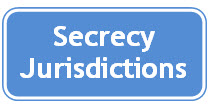 I had a discussion recently with a regulator from a major jurisdiction: a person who has had reason to use Tax Information Exchange Agreements and who knows their pitfalls from the inside.
I had a discussion recently with a regulator from a major jurisdiction: a person who has had reason to use Tax Information Exchange Agreements and who knows their pitfalls from the inside.
I asked him a simple question:
Do secrecy jurisdictions really know who are the beneficial owners of the structures that exist in their domains?
He laughed in response.
Look, I deal with the places that are cooperative — who have signed these deals, and where we think we might make some progress. And candidly they just don’t know. They ask the administrator who is meant to have the data and all they know is that the beneficial owner is a structure in another secrecy jurisdiction.
And in a sense it’s not that they’re lying: it may be that discretionary trust has been layered on discretionary trust, upon company and foundation until no one knows.
Was this chance, I asked?
No of course not.
But it does frustrate our purpose.
He said. And does it prove that these places really don’t know who owns the structures that operate within them, I asked?
He just laughed. And then added:
And remember I’m talking about enquiries made of the more willingly cooperative jurisdictions and we get nowhere.
I can’t name names. I’d like to but can’t. But let’s be clear we’re talking best case scenarios here. And candidly Tax Information Exchange Agreements aren’t working. And nor are beneficial ownership rules.
We can tweak them forever, but that’s the wrong direction of travel. Only mandatory identification of the warm bodies behind structures and the automatic exchange of information in accordance with that data can resolve this issue. Whilst the assumption of a right to privacy remains then we’ll get nowhere.
Thanks for reading this post.
You can share this post on social media of your choice by clicking these icons:
There are links to this blog's glossary in the above post that explain technical terms used in it. Follow them for more explanations.
You can subscribe to this blog's daily email here.
And if you would like to support this blog you can, here:


 Buy me a coffee!
Buy me a coffee!

@ Richard.
You are attacking the people who actually OWN the world here. They are more powerful than governments. You have no chance of penetrating this.
This is one more reason why Land Value Tax is the sensible approach to eliminating Tax Avoidance and Tax Evasion. It becomes unnecessary to know who the beneficial owner is when you can confiscate the land and sell it to cover unpaid taxes. And since the land belongs to the local jurisdiction there is no need to deal with secrecy jurisdictions, co-operative or otherwise.
Lets see how the US and the UK do when it comes time for their ‘Peer Reviews’. While in many cases there is information in the US, there is no way for the US Government to know where to look.
For starters, banks are not required to report bank accounts held by foreign nationals to the Tax Authorities. There there are stock trading firms who in effect are nomineee shareholders for foreigners who have accounts with their firms.
There was an attempt to make an example of Panama at last month’s Global Forum but that failed. (And it should have given that there was a pledge not to punish jurisdictions for being evaluated early in the process.) But the big question was just how the US was going to explain/defend Delaware, and the others…
FATCA Fred!